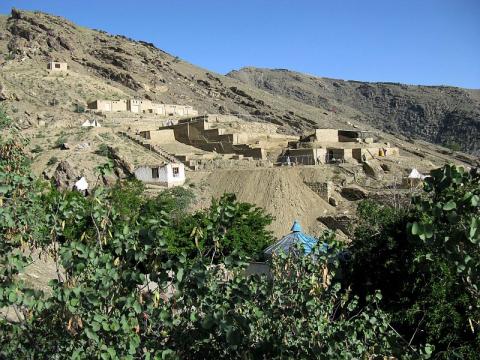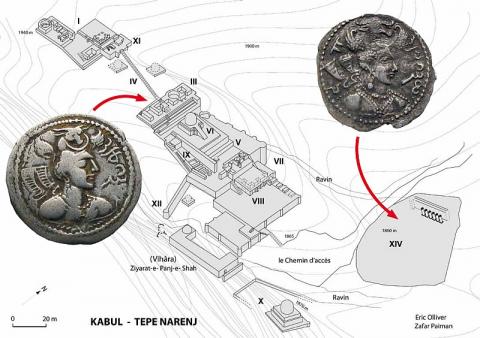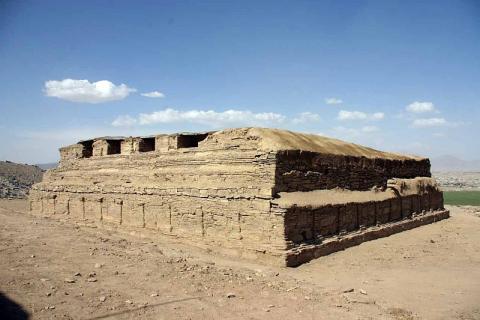Tepe Narenj (Afghanistan) is a Buddhist archaeological site located south of the old city of Kabul, on the side of a hill named Koh-e-Zanburak (the “mountain of the little wasp”) and directly along one of the commercial routes that had once linked Kabul to India. Along with Mes Aynak (showcase 13), Tepe Narenj represents one of the most important recent discoveries not only in regard to the area around Kabul but also for the entire archaeology of Buddhism.
Following the chance discovery of archaeological remnants, the Afghan Institute of Archaeology launched a systematic investigation of the site, which is being excavated since 2004 under the direction of Zafar Paiman. Although the growth of the modern-day city has partly obliterated the ancient Buddhist sanctuary, excavations have brought to light several structures stretching over a series of artificial terraces (Figs. A and B), the middle one occupied by the Main Stupa (Fig. D). They have been attributed to four different phases spanning the period between the 5th and the late 10th or early 11th century CE.
The dense chronological framework, the magnificence of the architecture and decoration, and the reliability of the archaeological sequence provide a new point of reference for the cultural history of the region. In particular, Tepe Narenj highlights the prestigious patronage enjoyed by Buddhism from the 5th century on, when Kabul became a capital of the southern part of the Hunnic-dominated regions.
From the beginning, the colossal size of the main cultic images characterized the sculptural decoration made of polychrome clay. Special mention must be made of the remains of a shallow niche preserving traces of a colossal clay image, whose feet measure 71 cm long. It was possibly a seated figure of Maitreya, the future Buddha, flanked by two minor figures on the sidewalls, of which only the pedestals have been found. Given the imposing size of the sculptures and the shallowness of the architectural setting, this triad must have been visible over a long distance.
Another remarkable find in one of the chapels is the figure of a royal donor kneeling before a colossal seated Buddha, who is flanked by his attendant Vajrapāni (“the bearer of the vajra, or thunderbolt”), Bodhisattvas and lay devotees (Fig. C). The crown decorated with three crescent moons that the kneeling character wears is suggestive of a Hunnic king.
Tepe Narenj confirms for the area of Kabul the existence of a distinguished artistic production, both unique and integrated into a broader artistic network at the same time. Moreover, uncommon architectural features and layouts make Tepe Narenj a precious source of information about the development of Buddhist religious concepts and rituals in the second half of the 1st millennium.




